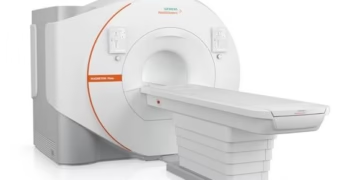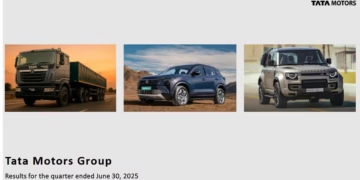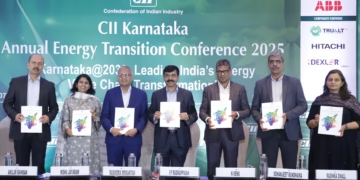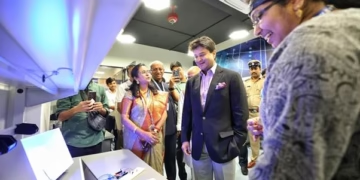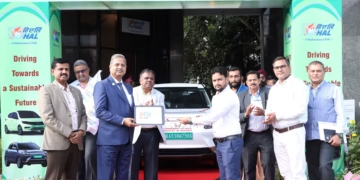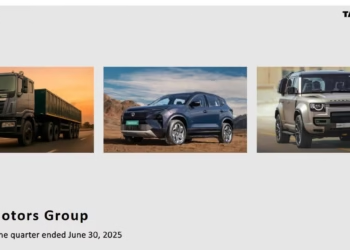Toyota City, Japan, December 20, 2024―Toyota Motor Corporation (Toyota) announced today that it will commence sales of its all-new Alphard and Vellfire Plug-in Hybrid Electric Vehicle (PHEV; six-seater) models in Japan on January 31, 2025. Gasoline and Hybrid Electric Vehicle (HEV) models of the Alphard and Vellfire have also been improved, and sales will commence on January 7, 2025.
-

- Alphard Executive Lounge (2.5-liter Plug-in Hybrid, E-Four, six-seater) (Model with options shown)
-

- Vellfire Executive Lounge (2.5-liter Plug-in Hybrid, E-Four, six-seater) (Model with options shown)
The joy of comfortable mobility offered by PHEVs
The Alphard and Vellfire (gasoline and HEV models), which were completely redesigned in June 2023, were developed from the concept of “the joy of comfortable mobility” to create a space where everyone, from the driver to rear seat passengers, can share consideration and appreciation in all kinds of situations, whether traveling with loved ones and family members or taking important visitors to and from work. The platform has been overhauled to offer significant improvements to basic performance, such as riding experience and comfort, making them suitable for a wide range of customers, from families to VIPs.
The new PHEV models offer improved quietness and riding experience, enhancing the joy of comfortable mobility offered to the driver and rear seat passengers in all kinds of situations.
Comfort has been enhanced through the quietness of a BEV, which produces minimal noise and vibrations, and the low center of gravity and stability provided by the large-capacity lithium-ion battery mounted under the floor. The ability to drive with care for the surrounding environment, such as during late-night pick-ups and drop-offs, has also been further enhanced to make it more suitable for use as a chauffeured car.
Air conditioning can also be operated using electricity and doesn’t require the engine to be started while waiting for pick-up as a chauffeured car, helping to maintain a comfortable space and contributing to the environment.
The Plug-in Hybrid System enables BEV-mode driving for many daily chauffeured trips, using only the electricity stored in the battery*2 (BEV-mode driving range equivalent to 73 km*3). The engine can be used for traveling long distances with peace of mind.
PHEVs are one of many important pathways for achieving carbon neutrality. Going forward, Toyota intends to continue its multi-pathway approach, promoting the widespread uptake of electrified vehicles by expanding its line-up to cater to diverse needs.
Improvements to gasoline / HEV models
All models are now equipped with a Digital Inner Mirror with built-in dash cams (front and rear) as standard. The Z and Z Premier grades are now available with a JBL premium sound system (15 speakers) and a 14-inch rear-seat entertainment system to further enhance cabin comfort.
In addition, three exterior body colors are available for the Vellfire, including a new exclusive Precious Metal color that accentuates the vehicle’s aggressive demeanor.
An eight-seater X grade has also been added to the Alphard HEV.
| *1 | As of December 2024. According to Toyota research. |
|---|---|
| *2 | According to Toyota research. |
| *3 | Driving distance in WLTC mode while using battery charge. As evaluated by the Ministry of Land, Infrastructure, Transport and Tourism. The engine will disable BEV driving irrespective of the remaining battery power under a certain state of the engine or drive battery, air conditioner use, or driving style (exceeding the prescribed speed). |
Sales Outline
- Base sales volume for Japan
- 8,600 units per month (approx. 70% Alphard and 30% Vellfire; monthly sales target for PHEV models: 200 units/month)
Production Plant
Toyota Auto Body Co., Ltd. (Toyota Auto Body)
Manufacturer’s Suggested Retail Prices
Alphard
| Grade | Seating | Powertrain | Transmission | Driveline | Price* (JPY) |
|---|---|---|---|---|---|
| X | 8 | 2.5-liter Series Parallel Hybrid System (A25A-FXS) | Electric continuously variable transmission | 2WD (FF) | 5,100,000 |
| E-Four | 5,320,000 | ||||
| Z | 7 | 2.5-liter gasoline engine (2AR-FE) | Super CVT-i | 2WD (FF) | 5,550,000 |
| 4WD | 5,748,000 | ||||
| 2.5-liter Series Parallel Hybrid System (A25A-FXS) | Electric continuously variable transmission | 2WD (FF) | 6,350,000 | ||
| E-Four | 6,570,000 | ||||
| Executive Lounge | 7 | 2.5-liter Series Parallel Hybrid System (A25A-FXS) | Electric continuously variable transmission | 2WD (FF) | 8,600,000 |
| E-Four | 8,820,000 | ||||
| 6 | 2.5-liter Series Parallel Plug-in Hybrid System (A25A-FXS) | Electric continuously variable transmission | E-Four | ◎10,650,000 |
| * | Includes consumption tax. Different pricing applies for Hokkaido and Okinawa. Does not include recycling fees. |
|---|
Vellfire
| Grade | Seating | Powertrain | Transmission | Driveline | Price* (JPY) |
|---|---|---|---|---|---|
| Z Premier | 7 | 2.4-liter Turbo engine (T24A-FTS) | Direct Shift-8AT | 2WD (FF) | 6,700,000 |
| 4WD | 6,898,000 | ||||
| 2.5-liter Series Parallel Hybrid System (A25A-FXS) | Electric continuously variable transmission | 2WD (FF) | 7,050,000 | ||
| E-Four | 7,270,000 | ||||
| Executive Lounge | 7 | 2.5-liter Series Parallel Hybrid System (A25A-FXS) | Electric continuously variable transmission | 2WD (FF) | 8,800,000 |
| E-Four | 9,020,000 | ||||
| 6 | 2.5-liter Series Parallel Plug-in Hybrid System (A25A-FXS) | Electric continuously variable transmission | E-Four | ◎10,850,000 |
| * | Includes consumption tax. Different pricing applies for Hokkaido and Okinawa. Does not include recycling fees. |
|---|
Overview of PHEV models
2.5-liter Plug-in Hybrid System for environmental and dynamic performance
- The PHEV models achieve a driving range of 73 km on a full charge, enabling BEV-mode driving for many daily chauffeured trips using electricity stored in the battery. On longer drives, the engine supplements battery power that ensures the cruising range needed for traveling long distances with peace of mind.
- A large-capacity lithium-ion battery has been mounted under the floor in the center of the vehicle, maintaining cabin space while further lowering the center of gravity (-35 mm compared to HEV*4). This, in combination with an optimized body frame, ensures a comfortable riding experience and stability with fewer vibrations.
- A new Smooth Stop control system, which suppresses sudden nose-dives*5 when decelerating, helps stabilize passenger seating positions to achieve a high riding experience.
- Equipped with a high-output density drive motor, the PHEV models reach a maximum system output*6 of 225 kW (306 PS) and, by fully utilizing the motor, achieve smooth acceleration.
- Achieves hybrid fuel economy of 16.7 km/L*7.
- Engine noise has been reduced by increasing the motor assist range and suppressing engine revolutions. In addition, road noise has been reduced through the addition of sound insulation material to the instrument panel, doors, and other interior materials, as well as the addition of urethane sponge to the body frame, improving quietness.
- Auto BEV / HEV mode switching control has been used, whereby the driving load for each section of the route to the destination is anticipated, such as whether it will be city or mountain driving. BEV mode is used for the most appropriate sections of the route to achieve efficient driving, which contributes to low fuel consumption.

- 2.5-liter Plug-in Hybrid System
| *4 | According to in-house measurements. |
|---|---|
| *5 | When the front of the vehicle drops during sudden deceleration due to inertia. |
| *6 | System output provided by the engine and lithium-ion battery (Toyota Motor Corporation calculation). |
| *7 | As evaluated by the Ministry of Land, Infrastructure, Transport and Tourism. WLTC mode (Worldwide Harmonized Light Vehicles Test Cycle) is an internationally recognized test cycle and is based on average usage ratios for urban, suburban, and highway driving. |
Charging and power supply functions characteristic of a PHEV
- The vehicle is equipped with both standard charging and rapid charging functions. Charging time is approximately 38 minutes (for approximately 80% of a full charge)*8, providing significant time savings over standard charging with a 200V charging cable.
- The vehicle is equipped with a maximum 1,500W (AC 100V) external power supply function as standard―useful during blackouts and other emergencies, as well as for outdoor leisure activities. In addition to an accessory electrical socket in the luggage compartment and the rear end of the center console box, the PHEV model comes with a vehicle power connector that, when plugged into the vehicle’s charging inlet, functions as an external power socket providing 1,500W (AC 100V).
- The vehicle is equipped with Vehicle to Home (V2H)*9, a system that allows electricity stored in the vehicle battery to be supplied to the home, enabling the vehicle to be used as a reliable storage battery during blackouts and other times of emergency. By connecting the V2H device*10 (sold separately), the electricity stored in the vehicle battery can be used as household electricity.
- The vehicle comes with both a BEV external power supply mode, which enables electricity stored in the battery to be used to supply external power for outdoor, leisure, and other activities, and an HEV external power supply mode, which enables the car to be used as a power supply during blackouts, disasters, and other emergencies. In the HEV external power supply mode, electricity is supplied from the battery only until the remaining power falls to a set level, after which the engine starts to supply electricity. With a full battery charge and a full tank of gas, this system can provide enough electricity for about 5.5 days of use*11.
- The PHEV models come with a “My Room Mode” that lets users enjoy air conditioning and audio systems from the external power source by turning the power switch on while charging. Creating a comfortable interior space without running the engine is a feature that turns the cabin into an additional room that can be used for teleworking, rest, or any other activities.
| *8 | According to in-house measurements, when charged using a rapid charging station with an output of 50 kW or higher and a maximum rated output current of 125A. Charging times can vary according to the amount of remaining battery charge, battery and ambient temperatures, and the specifications of the connected power source or charging stand. |
|---|---|
| *9 |
|
| *10 | The V2H Device, sold separately, is required to transform DC electricity drawn from the rapid charging inlet (fitted with an external V2H power supply function) into AC electricity for household use. |
| *11 | Calculated from daily power consumption of 10 kWh (400 Wh per hour) for an average household. |
PHEV-specific equipment
- The PHEV models come with exclusive 19-inch aluminum wheels with silver sputtering paint that accentuates its elegance as standard.
- A woodgrain steering wheel and a ceiling covered in Ultrasuede®*12 create a high-quality, special cabin space.
| *12 | Ultrasuede® is a registered trademark of Toray Industries, Inc. |
|---|
Alphard Welcab (type-designated vehicles)
In addition to the same improvements as the base model, a Side Lift-Up Tilt Seat model (seven-seater) has also been added to the X grade of gasoline models.
Manufacturer’s Suggested Retail Prices
- Price range
- 4,362,000 yen to 5,853,000 yen
- Note
- Different pricing applies for Hokkaido and Okinawa. Does not include recycling fees.
Link to the special website (Japanese only)
Toyota Auto Body specially-equipped vehicle: Alphard Spacious Lounge
Toyota Auto Body has created a four-seater (HEV / PHEV) specification based on the Alphard Executive Lounge with elevated value for chauffeured use. Sales will commence on January 31, 2025.
- Note
- On-site registration is required.
Main equipment
- This specification is equipped with exclusive rear seats with headrest speakers that aim to achieve a comfortable sitting position. There is approximately 420 mm more legroom than the base model.
- Also equipped with a luggage clothes rack and refrigerator.







